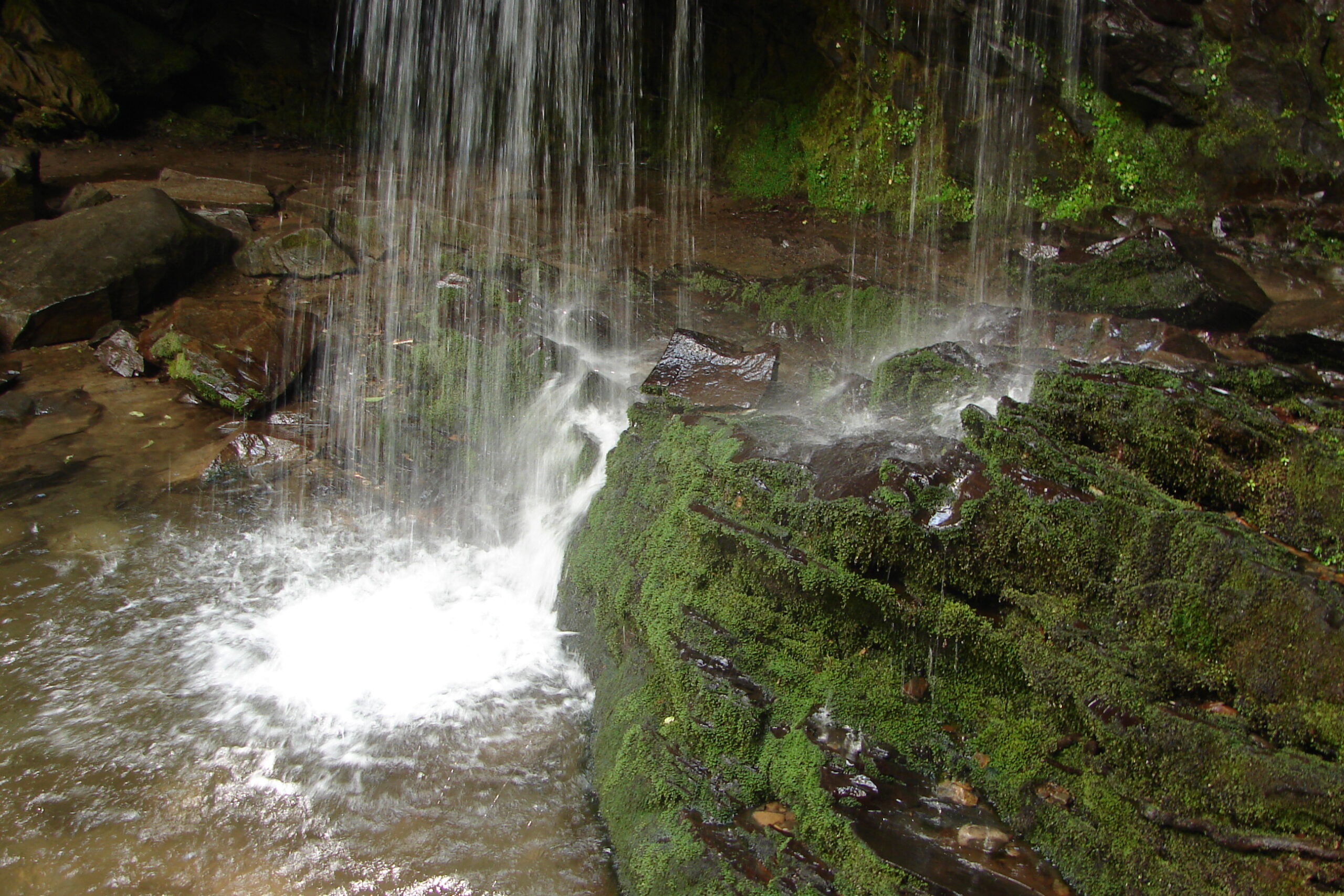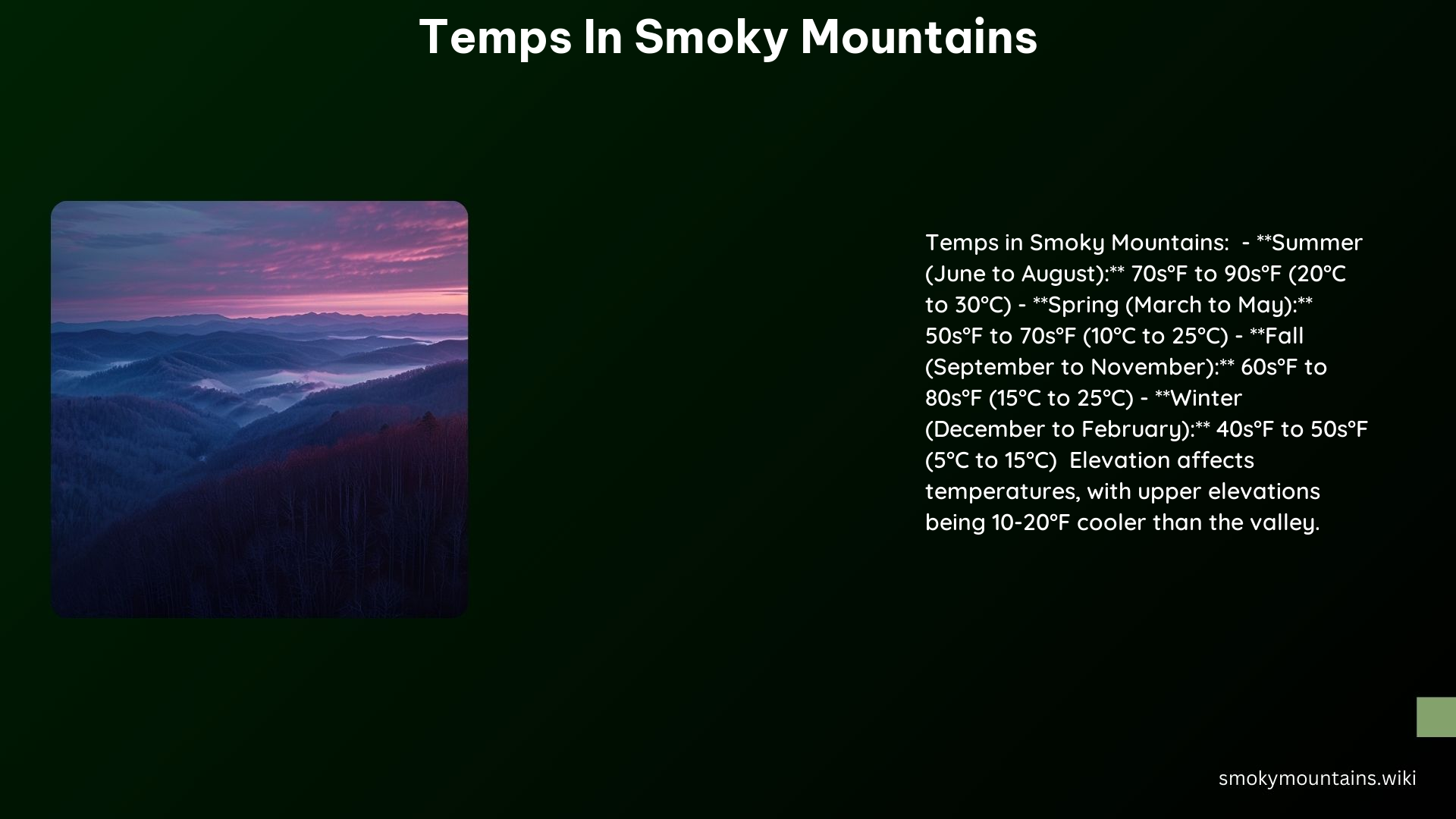The Great Smoky Mountains National Park is a popular destination for outdoor enthusiasts, offering a diverse range of landscapes and weather conditions. Understanding the temperatures in the Smoky Mountains is crucial for planning your visit and ensuring a comfortable experience. In this comprehensive guide, we’ll explore the seasonal variations, elevation effects, and other key factors that influence the temperatures in this stunning mountain range.
Seasonal Temperature Fluctuations

Spring (March to May)
During the spring months, the Smoky Mountains experience mild temperatures, with daytime highs ranging from the 50s°F to the 70s°F (10°C to 25°C). However, it’s important to note that the higher elevations can be significantly cooler, with temperatures often 10-20°F lower than the lower elevations.
Summer (June to August)
The summer months in the Smoky Mountains are warm and humid, with temperatures ranging from the 70s°F to the 90s°F (20°C to 30°C). Again, the higher elevations provide a respite from the heat, with temperatures typically 10-20°F cooler than the lower areas.
Fall (September to November)
As autumn approaches, the temperatures in the Smoky Mountains begin to cool down. In September, daytime highs can range from the 60s°F to the 80s°F (15°C to 25°C), while by November, the temperatures drop to the 40s°F to the 60s°F (5°C to 20°C).
Winter (December to February)
The winter months in the Smoky Mountains can be quite cold, with occasional snowfall, especially at the higher elevations. Daytime temperatures typically range from the 40s°F to the 50s°F (5°C to 15°C), with nighttime temperatures often dipping below freezing.
Elevation Effects on Temperature

The Smoky Mountains are known for their dramatic elevation changes, and this has a significant impact on the temperatures you’ll experience during your visit.
Lower Elevations
In the lower elevations of the Smoky Mountains, such as the areas around Gatlinburg, daytime temperatures can reach the mid-80s°F during the summer months. However, the higher elevations experience much milder temperatures, often in the 60s°F.
Higher Elevations
As you gain elevation in the Smoky Mountains, the temperatures drop significantly. For example, at Clingmans Dome, the highest point in the park at 6,643 feet (2,025 meters), the temperatures can be 10-20°F cooler than the lower elevations.
Average Monthly Temperatures
To give you a more detailed understanding of the temperatures in the Smoky Mountains, here are the average monthly temperatures for two key locations:
| Location | January | July | December |
|---|---|---|---|
| Gatlinburg (1,289 ft) | 35°F/19°F | 65°F/53°F | 37°F/21°F |
| Clingmans Dome (6,643 ft) | 28°F/14°F | 59°F/49°F | 29°F/16°F |
As you can see, the higher elevation of Clingmans Dome results in significantly cooler temperatures throughout the year compared to the lower-elevation Gatlinburg area.
Precipitation Patterns
In addition to temperature, precipitation is another important factor to consider when planning your visit to the Smoky Mountains. The park receives a significant amount of rainfall, with the lowlands averaging 55 inches per year and the higher elevations, such as Clingmans Dome, receiving up to 85 inches per year.
The monthly precipitation patterns in the Smoky Mountains are relatively consistent, with the wettest months being January (7.0 inches), July (8.3 inches), and December (7.3 inches).
Additional Resources
To stay up-to-date on the current weather conditions and forecasts for the Great Smoky Mountains National Park, be sure to check the following resources:
- The Weather Channel’s Great Smoky Mountains National Park Forecast
- AccuWeather’s Great Smoky Mountains National Park Forecast
- National Park Service’s Weather Information for the Great Smoky Mountains
- Smoky Mountain Navigator’s Weather Guide
- Hiking in the Smokys’ Weather Information
By understanding the Temps in Smoky Mountains, you can better plan your outdoor adventures and ensure a comfortable and enjoyable experience in this stunning national park.
References
- The Weather Channel. (n.d.). Great Smoky Mountains National Park, TN Weather Forecast. Retrieved from https://weather.com/weather/today/l/b2e1cc98c797221f852c70b09f6e29f79a22262f4062b9374627fb4c07c892b1
- AccuWeather. (n.d.). Great Smoky Mountains National Park, TN Weather Forecast. Retrieved from https://www.accuweather.com/en/us/great-smoky-mountains-national-park/37738/weather-forecast/23808_poi
- National Park Service. (2023). Weather – Great Smoky Mountains National Park. Retrieved from https://www.nps.gov/grsm/planyourvisit/weather.htm
- Smoky Mountain Navigator. (n.d.). Weather Great Smoky Mountains National Park. Retrieved from https://www.smokymountainnavigator.com/explore-the-smoky-mountains/the-great-smoky-mountain-national-park/weather-in-the-great-smoky-mountains/
- Hiking in the Smokys. (n.d.). Weather. Retrieved from https://hikinginthesmokys.com/weather/.
